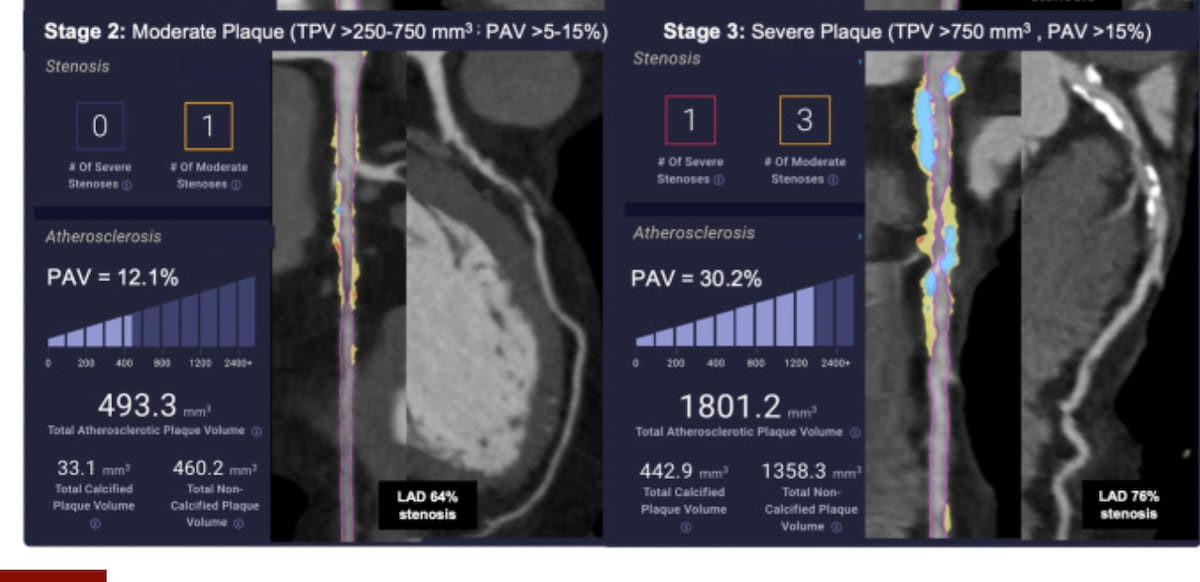CT-Based Staging System for Coronary Artery Disease Gets FDA's Breakthrough Device Designation
Employing quantitative computed tomography, the staging system’s insights on stenosis, ischemia and coronary atherosclerosis may facilitate individualized assessments of heart disease risk.
The Food and Drug Administration (FDA) has granted Breakthrough Device Designation for Cleerly’s Coronary Artery Disease (CAD) Staging System.
Offering a four-stage approach that incorporates total plaque volume (TPV) and percent atheroma volume (PAV) assessments from quantitative computed tomography (CT), Cleerly said the CAD Staging System provides insights into actionable aspects of stenosis, ischemia, and coronary atherosclerosis.
Cleerly's Coronary Artery Disease (CAD) Staging System, which offers a four-stage approach for assessing individual heart disease risk, received Breakthrough Device Designation from the Food and Drug Administration (FDA). (Images courtesy of the Journal of Cardiovascular Computed Tomography.)

Emphasizing the system’s potential for providing individual risk assessments for heart disease, Cleerly added that a randomized controlled trial (TRANSFORM) will assess use of the CAD Staging System for patients with diabetes, pre-diabetes or metabolic syndrome who are currently asymptomatic for heart disease.
“As our Cleerly CAD Staging System becomes available to physicians and patients, it will provide the rationale for preventive tailored treatment of CAD with risk-based therapy goals,” said Udo Hoffmann, M.D., M.P.H., the chief scientific officer of Cleerly.
Can Photon-Counting CT be an Alternative to MRI for Assessing Liver Fat Fraction?
March 21st 2025Photon-counting CT fat fraction evaluation offered a maximum sensitivity of 81 percent for detecting steatosis and had a 91 percent ICC agreement with MRI proton density fat fraction assessment, according to new prospective research.
The Reading Room: Racial and Ethnic Minorities, Cancer Screenings, and COVID-19
November 3rd 2020In this podcast episode, Dr. Shalom Kalnicki, from Montefiore and Albert Einstein College of Medicine, discusses the disparities minority patients face with cancer screenings and what can be done to increase access during the pandemic.